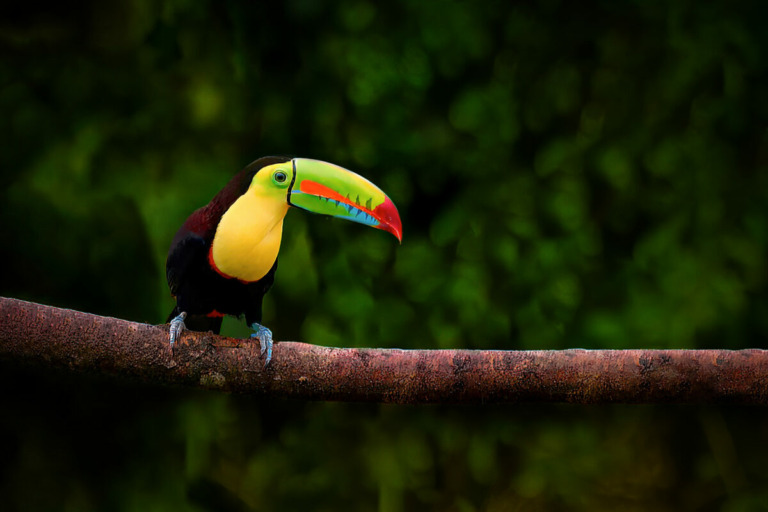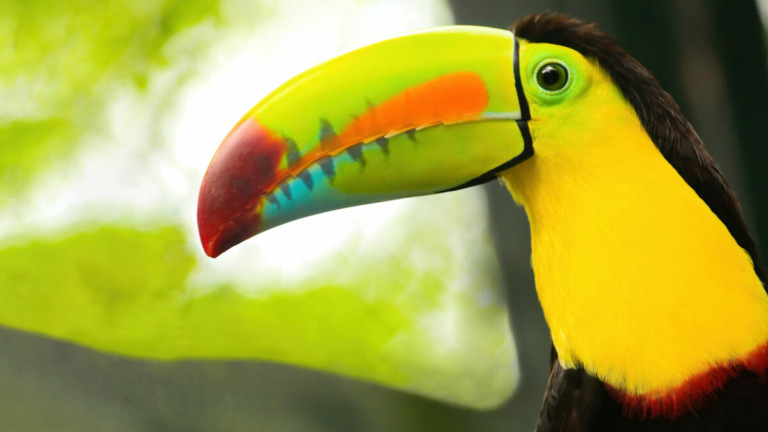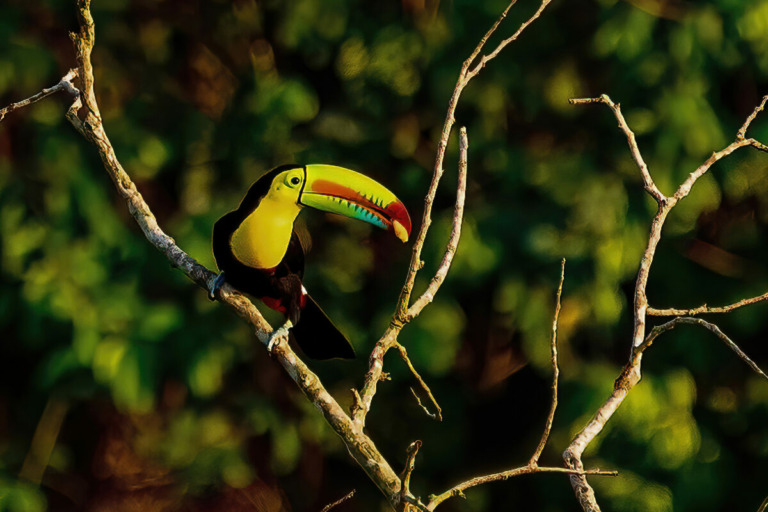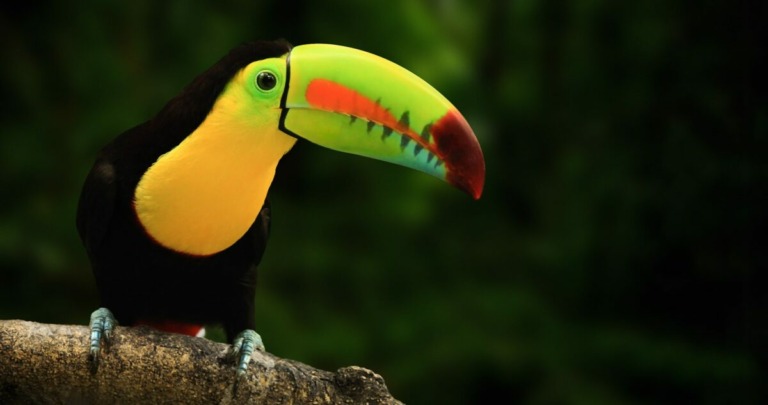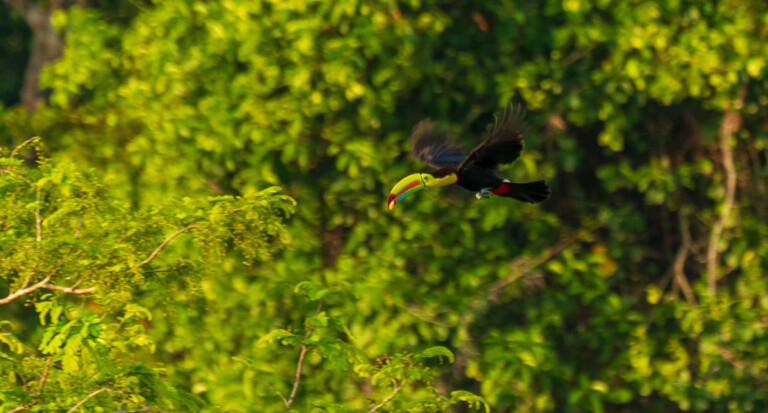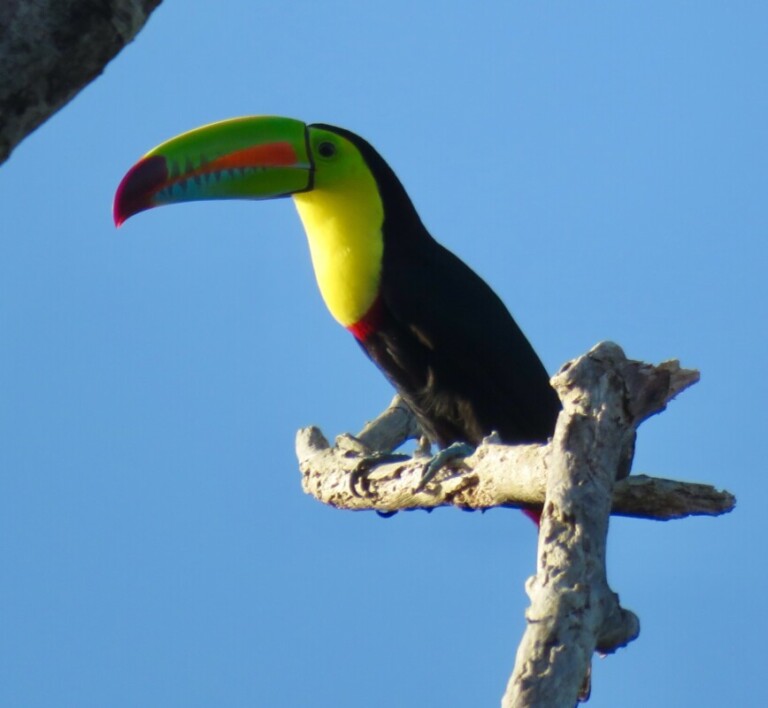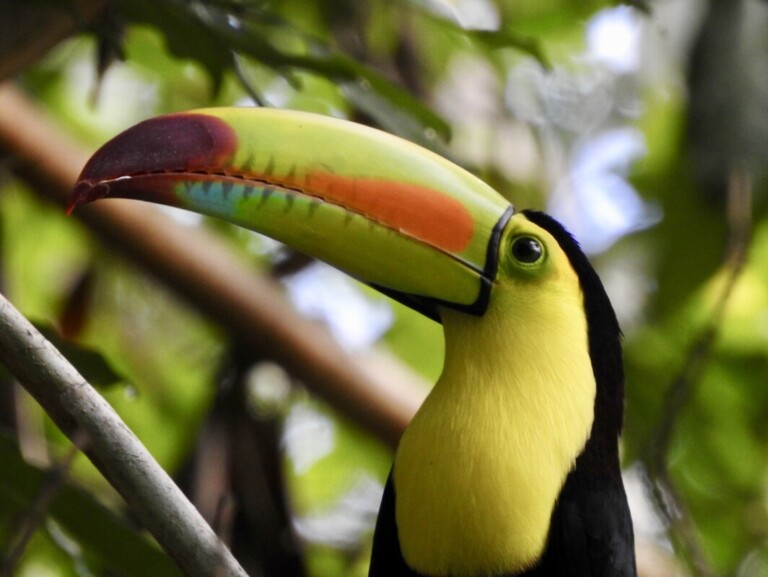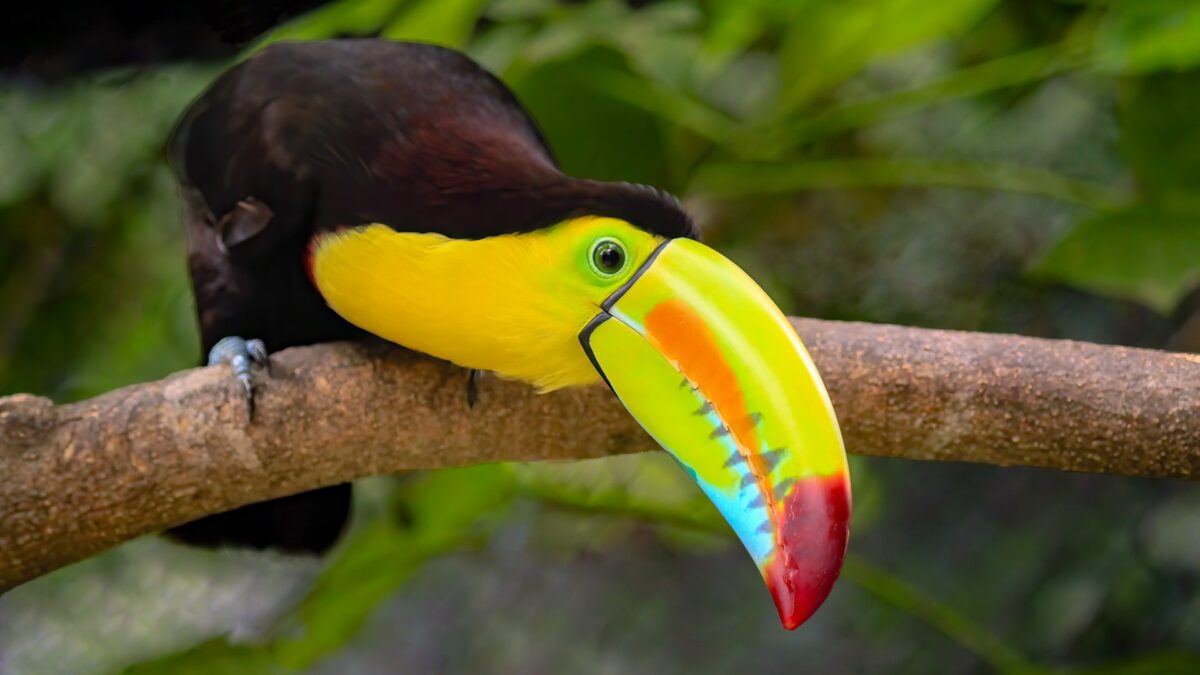
The Keel-billed Toucan (Ramphastos sulfuratus) has a black body, a yellow neck, chest, and throat, and a large, colorful beak with a keel-shaped ridge on top. Its bill is mostly green with red, orange, and blue patches. Large unmistakable toucan with a huge, rainbow-colored bill. Often seen in pairs, but not usually in groups like aracaris. Flies with a few flaps followed by a swooping glide, sometimes high over the forest canopy, and looks like a ‘flying banana.’ Heard more often than seen: ‘song’ is a far-carrying, frog-like croak, repeated steadily. Despite its large size and bright colors, can be difficult to see in leafy canopy, where it moves deliberately in search of food.
Habitats e distribuição
O tucano-de-bico-vermelho é nativo das florestas tropicais e subtropicais da América Central e do Sul. A sua área de distribuição estende-se desde o sul do México, passando pela América Central, até ao norte da Colômbia e ao oeste da Venezuela. Estas aves desenvolvem-se em florestas de planície e, por vezes, em florestas de crescimento secundário.
Comportamentos e reprodução
Os tucanos-de-bico-direito são aves sociais, frequentemente encontradas em pequenos bandos. São conhecidos pelo seu comportamento brincalhão e pelo seu som alto, semelhante ao dos sapos. Durante a época de reprodução, fazem os seus ninhos em cavidades de árvores, pondo 2 a 4 ovos. Ambos os progenitores partilham as tarefas de incubação dos ovos e de alimentação das crias até ao nascimento.
Dieta
Estas aves alimentam-se principalmente de frutos, mas ocasionalmente comem insectos, répteis, aves e ovos.
Cores
Corpo preto, pescoço, peito e garganta amarelos, bico colorido com manchas verdes, vermelhas, cor de laranja e azuis
Factos divertidos
The Keel-billed Toucan's bill, despite its size, is lightweight due to its hollow, honeycombed structure.
Their colorful bills are not just for show; they use them to reach and manipulate food.
Toucans have a unique way of sleeping, tucking their beaks under their wings and tail over their head.
They play a critical role in their ecosystem by dispersing seeds from the fruits they eat.
Toucans engage in "bill fencing," a playful behavior where they spar with their bills.
They are excellent flyers but prefer to hop from branch to branch within the canopy.
Estado de conservação e esforços
O tucano-de-bico-vermelho está classificado como Pouco Preocupante pela Lista Vermelha da IUCN. No entanto, enfrenta ameaças de perda de habitat devido à desflorestação e ao comércio ilegal de animais de estimação. Os esforços de conservação centram-se na preservação do habitat e na sensibilização para a importância de proteger os ecossistemas das florestas tropicais. Em algumas áreas, o ecoturismo também ajuda a promover a conservação destas aves vibrantes, fornecendo incentivos económicos às comunidades locais para protegerem os seus habitats naturais.
